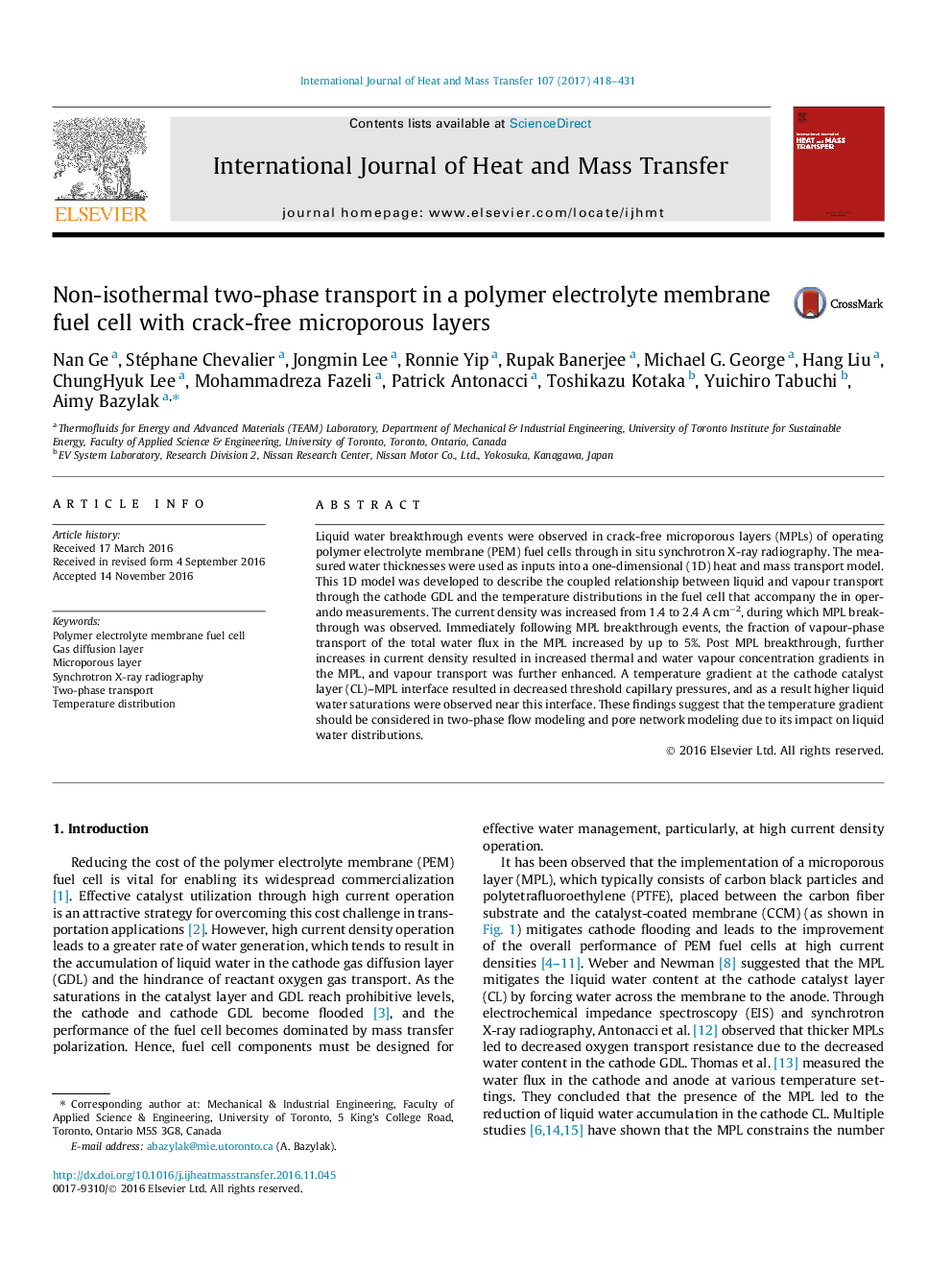| Article ID | Journal | Published Year | Pages | File Type |
|---|---|---|---|---|
| 4994598 | International Journal of Heat and Mass Transfer | 2017 | 14 Pages |
Abstract
Liquid water breakthrough events were observed in crack-free microporous layers (MPLs) of operating polymer electrolyte membrane (PEM) fuel cells through in situ synchrotron X-ray radiography. The measured water thicknesses were used as inputs into a one-dimensional (1D) heat and mass transport model. This 1D model was developed to describe the coupled relationship between liquid and vapour transport through the cathode GDL and the temperature distributions in the fuel cell that accompany the in operando measurements. The current density was increased from 1.4Â to 2.4Â AÂ cmâ2, during which MPL breakthrough was observed. Immediately following MPL breakthrough events, the fraction of vapour-phase transport of the total water flux in the MPL increased by up to 5%. Post MPL breakthrough, further increases in current density resulted in increased thermal and water vapour concentration gradients in the MPL, and vapour transport was further enhanced. A temperature gradient at the cathode catalyst layer (CL)-MPL interface resulted in decreased threshold capillary pressures, and as a result higher liquid water saturations were observed near this interface. These findings suggest that the temperature gradient should be considered in two-phase flow modeling and pore network modeling due to its impact on liquid water distributions.
Keywords
Related Topics
Physical Sciences and Engineering
Chemical Engineering
Fluid Flow and Transfer Processes
Authors
Nan Ge, Stéphane Chevalier, Jongmin Lee, Ronnie Yip, Rupak Banerjee, Michael G. George, Hang Liu, ChungHyuk Lee, Mohammadreza Fazeli, Patrick Antonacci, Toshikazu Kotaka, Yuichiro Tabuchi, Aimy Bazylak,
